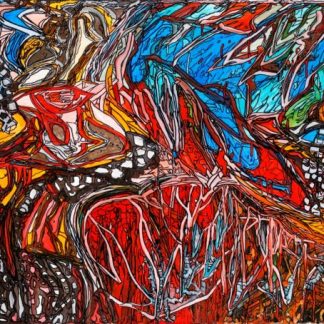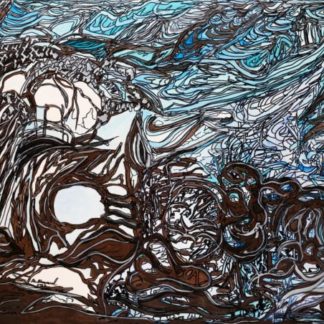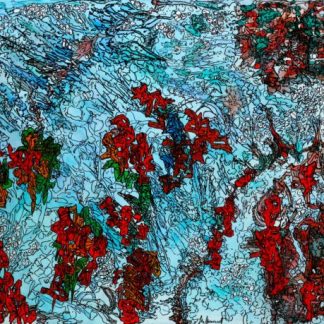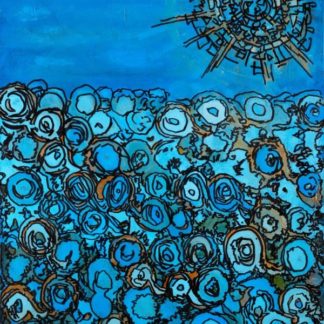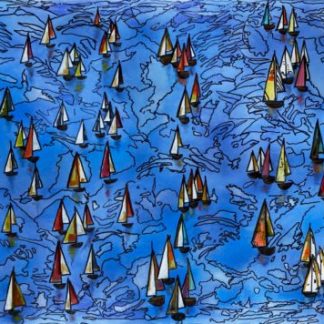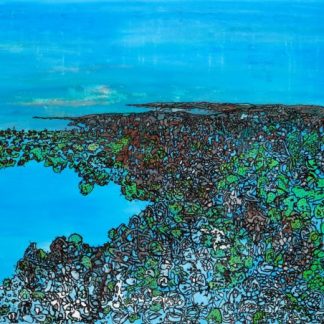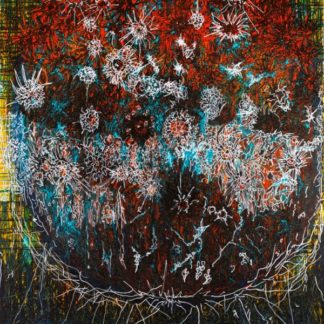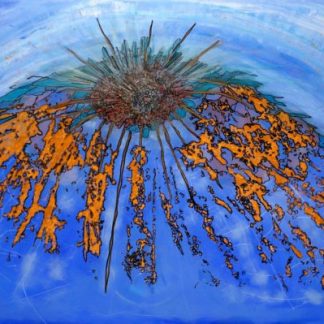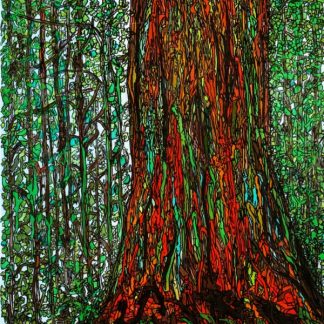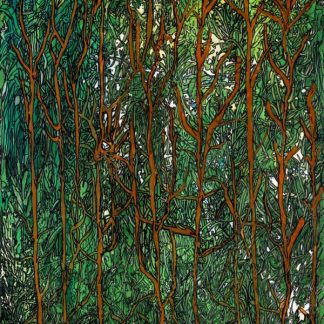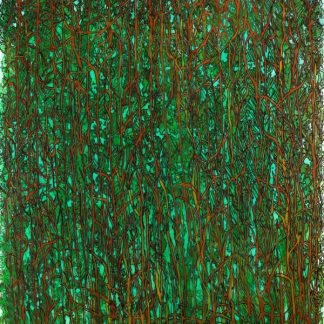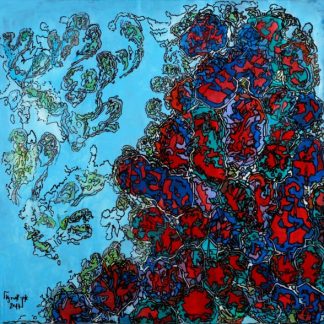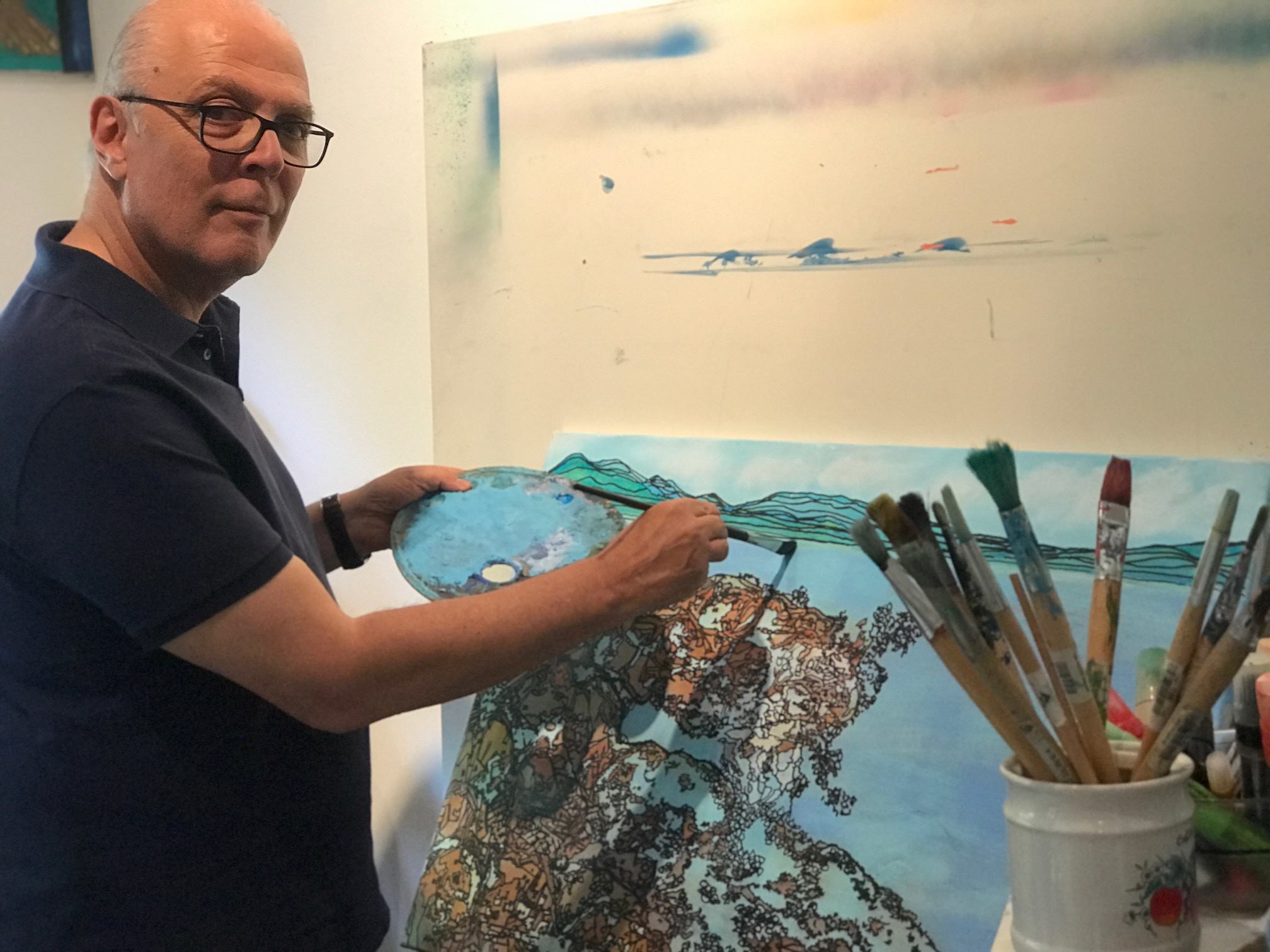
Ika Abarbanel
Ika Abravanel comes from a family of Swiss-Jewish , and Israeli musicians.
Born and raised in Jerusalem, he was discovered at a very young age by Yvette Schupak, who was Marc Chagall’s student, and began studying painting.
Later on, he joined Bezalel’s afternoon painting class in Jerusalem, and studied mainly techniques and materials. As the years went by, he continued to develop his own style.
The recurring motifs in his paintings suggest two main periods in his stylistic developments. In the first period(until 2010), his paintings are abstract with the recurring motif being the circle. During this period, he painted mainly with acrylics, and worked with a high-pressure water hose to create a depth effect layer after layer. The subject was accompanied by engraving with a knife over the soft color a moment before it dried but after it congealed. After the engraving, the subject was washed with a high-pressure water flow, and the process would repeat itself.
In the second period, since 2010, Ika Abravanel changed his style and began painting abstract landscapes. This work was first based on photographs he had taken or seen in magazines or daily newspapers, which inspired him to conceive the idea for the painting. Photography would form the basis for work in acrylics over canvas or cardboard. Subsequently, he would abandon the original photo and begin developing the painting in an unplanned fashion. The work would develop gradually until such point where he would paint lines in different colors, mainly black, in acrylic but also in marker pens of different colors and thicknesses to highlight and emphasize parts of the landscape shapes in the painting.
Thus, his current artistic technique is based on free and unplanned development from a concept based on a photograph by adding color, creating reliefs and emphases with design lines, also not planned in advance, until the final outcome is achieved.
According to Ika Abravanel’s opinion, painting is a kind of meditation. It emerges out of a very pure and authentic place, sometimes from a hidden and mysterious place. You usually begin when you have some kind of idea. There is even an aspect of planning, because the imagination evokes an image, which can sometimes be highly detailed, but the outcome is completely dissimilar. This is because as the process develops, additional ideas suddenly come up, and various techniques are used, and often the original concept is even completely abandoned, and the painting becomes something else entirely that comes from a source that is difficult to define. Sometimes it is called inspiration.
The level of concentration, the physical nature of the work, and the level of self-criticism are often so high, that they stem the flow and create a mental block – a kind of virtual wall that is sometimes impassable. This is a sure way to destroy a painting with a potential. Therefore, in painting the steps are sometimes reminiscent of dance step – one by one, until suddenly a sequence of steps is understood as movement.
Abravanel’s career had been mainly managerial, before he underwent a transformation and began painting professionally. Despite the obvious and fundamental differences between them, Abravanel finds certain similarities between management and art. In management, there is greater room for planning. There are constraints, and there is considerable teamwork, as opposed to art, which is basically individual work. In management, compromises and collaborations are essential, whereas in art compromise means mediocrity.
The most important similarity between management and art is the requirement for absolute precision and “cleanliness” in execution. To achieve that, many years of experience are required. The manager/artist must also be able to cope with his inner urge to realize his potential at the highest level – in this respect, the similarity approaches identity.
Abravanel has been particularly influenced by Jackson Pollock, David Hockney, James Rosenquist, Lee Bontecou, Uri Lifshitz and Meir Pichhadze.
Among his other occupations, Abravanel serves as a board member of the Bezalel Academy of Arts and Design and leads the Bezalel Flowers, a philanthropic project of developing artistic talents in Israel’s socio-geographic periphery.
Showing 1–16 of 21 results
Showing 1–16 of 21 results



